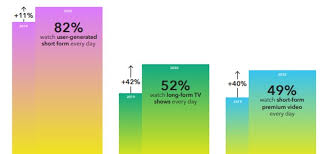Snapchat has published some new insights into how students feel about education, in light of COVID-19, and the impact that the pandemic has had on the school year. And while it’s impossible to estimate the full ramifications of the lockdowns and associated changes, the data does shine a light on some relevant trends relating to education and schooling.
As explained by Snapchat:
“A majority of US Snapchatters who are in school (84%) report that their schooling has changed this year due to COVID-19, moving at least partially to remote learning. […] This shift to remote learning is emerging as a unifying moment for Snapchatters around the globe.”
Snapchat notes that many students are now re-thinking their career plans due to the impacts of COVID-19, with 47% of US students who had defined paths now re-assessing their options. That makes sense – many of these students would have been on the brink of moving into the job market, which will now look a lot different, but that reflection has also, seemingly, changed the way many see education in general, and its potential value moving forward.
Snapchat notes that there’s a significant variance in approach here when comparing the attitudes of younger audiences:
“About half of today’s forward-thinking Gen Zs and Millennials (47%) want a non-traditional career path, compared to less than a quarter of Gen Xers and Boomers (23%).”
Could that be the YouTuber effect? Many kids these days are growing up watching YouTube and TikTok stars, as much as they are traditional TV celebrities (if not more). And that could indeed be changing their evaluation of what it takes to succeed and make a successful career, with these influencers essentially becoming millionaires on the back of making videos about what they love. That finding was reflected in a study commissioned by Lego last year, which found that kids are now 3x more likely to aspire toward a career as a YouTuber, rather than an astronaut.
Could the changing attitudes around education reflected in these stats be a further reflection of the influence of modern media inputs?
That same may also be reflected in this element of Snap’s study:
Yet, at the same time, Snapchatters do see education as important:
“That’s not to say Snapchatters don’t value their education. Many say it’s very important to them, with those in Malaysia (67%), Indonesia (58%), Brazil (57%), and Spain (55%) the most likely to agree.”
But the added stress of COVID-19 could be having an impact:
“Teens use the term “Stressful” to describe school. Their education is stressful enough in normal times, but even more so with the added concerns of COVID-19 and new rules to follow on campus.”
It makes sense that, with more kids spending more time online, and viewing influencer content, that the lifestyles they see depicted would be increasingly appealing amid the COVID-19 outbreak.
Another key element of the Snap study looks at the impacts on social interaction as a result of the pandemic, and how students are coping with such.
“School is an important setting for young people to make new friends and build connections through social activities like having lunch together, hanging out between classes, and going to dances and events. With masks and social distancing guidelines in place and schools having shifted partly or fully online, forming those lifelong friendships will look a little different. Snapchatters will still be searching for fun opportunities to meet and hang out with friends, but may rely on digital tools more heavily when real life interactions aren’t an option.”
That could be an important element of note for marketers that younger audiences are looking for ways to maintain connection and engage with others during the pandemic. That could make virtual events more enticing – TikTok, for example, recently hosted a virtual concert by the Weekend which generated a lot of interest.
Of course, these types of events will never replace real-life connections. But people need some way to stay in touch, and that could make video calling and messaging options a much bigger and more relevant consideration.
You can read Snapchat’s full report here.

Thank you for your sharing. I am worried that I lack creative ideas. It is your article that makes me full of hope. Thank you. But, I have a question, can you help me?
Your point of view caught my eye and was very interesting. Thanks. I have a question for you. https://www.binance.com/join?ref=P9L9FQKY
Thank you for your sharing. I am worried that I lack creative ideas. It is your article that makes me full of hope. Thank you. But, I have a question, can you help me?
Thank you for your sharing. I am worried that I lack creative ideas. It is your article that makes me full of hope. Thank you. But, I have a question, can you help me? https://www.binance.info/fr-AF/register?ref=JHQQKNKN
Thanks for sharing. I read many of your blog posts, cool, your blog is very good.